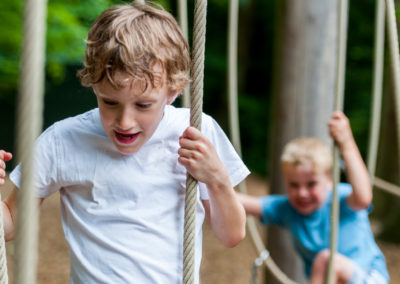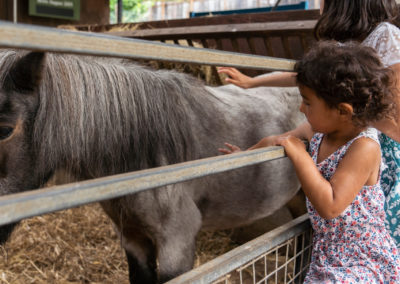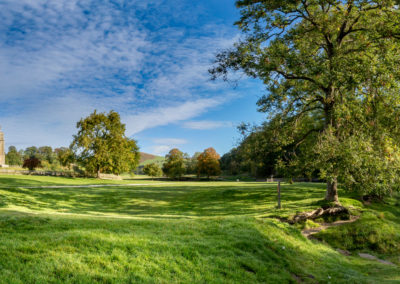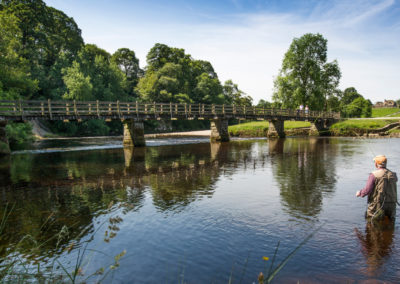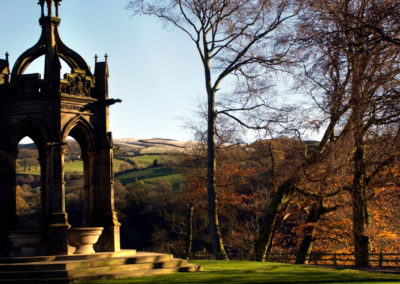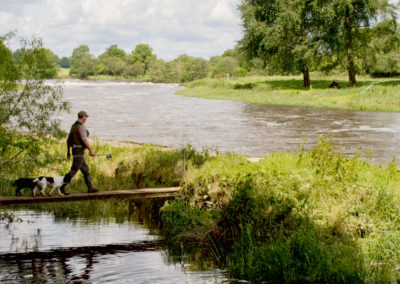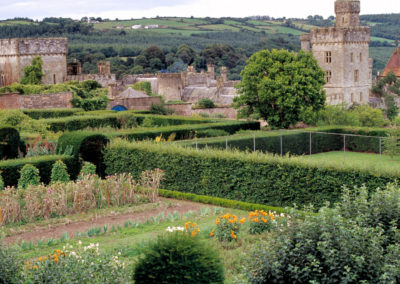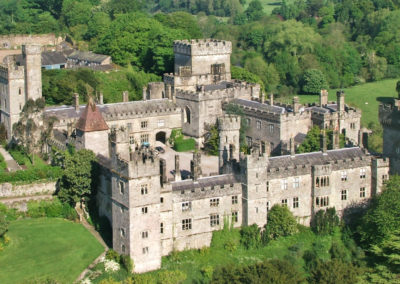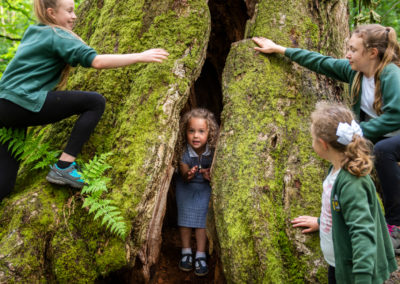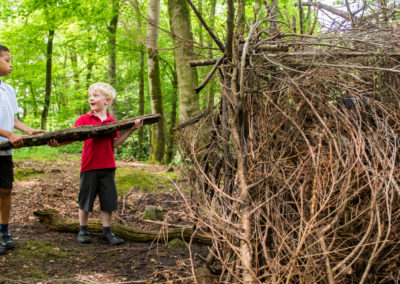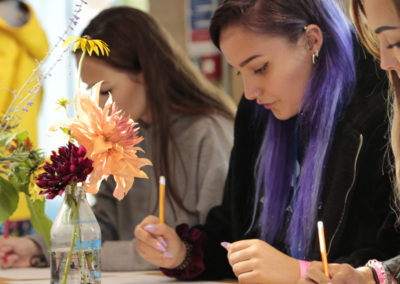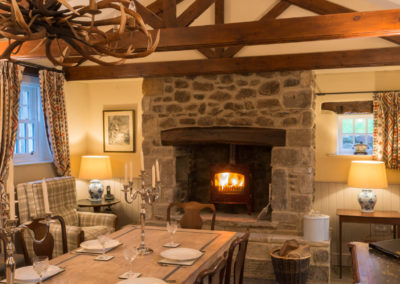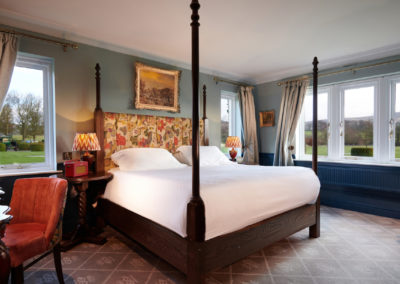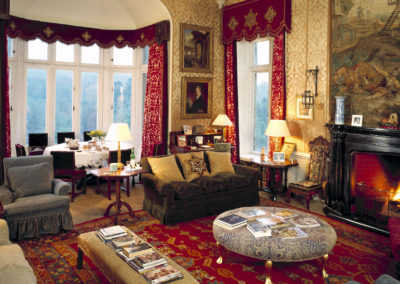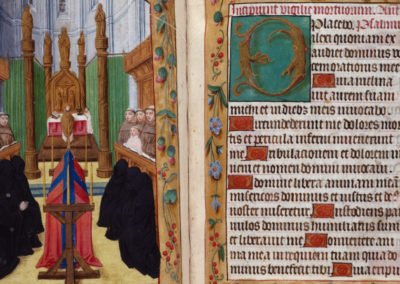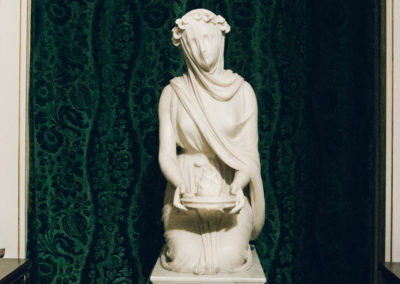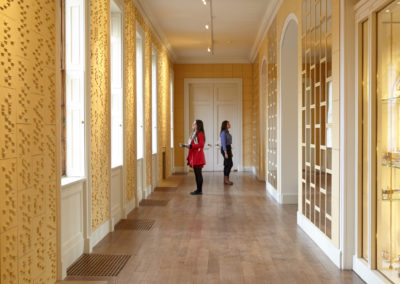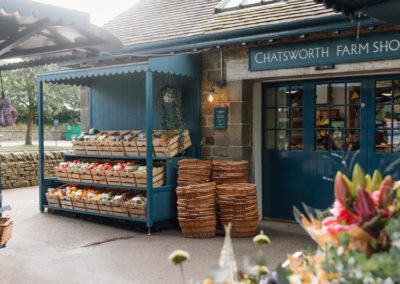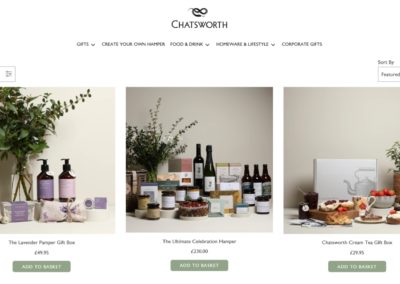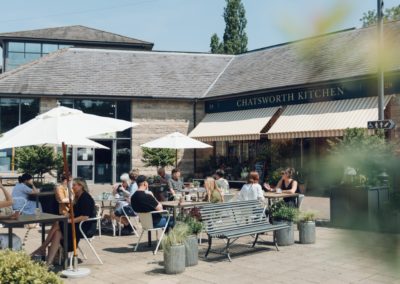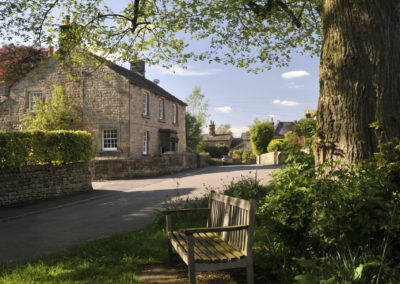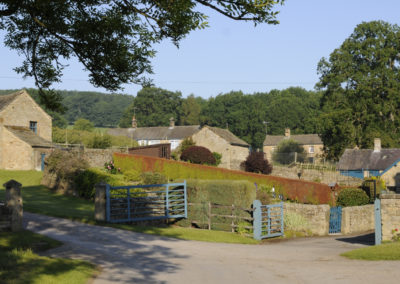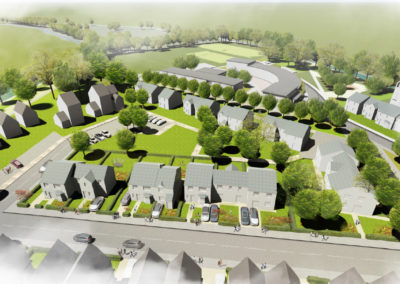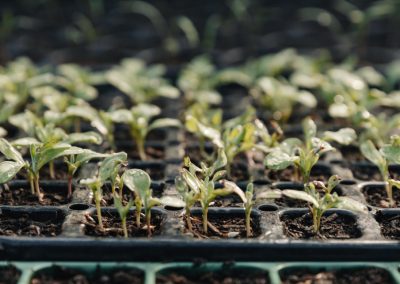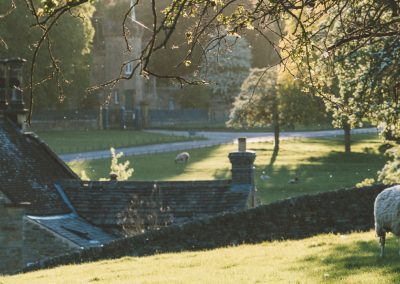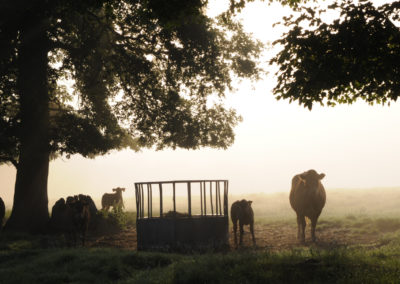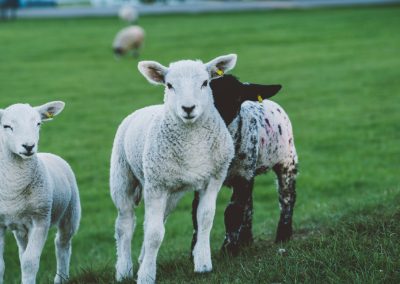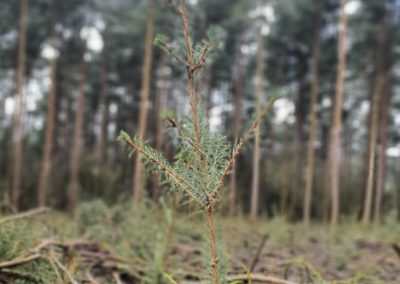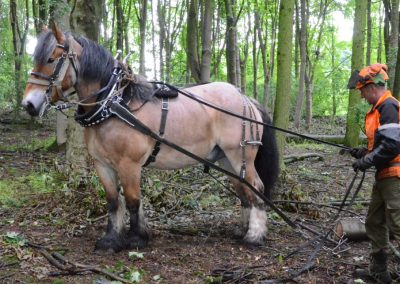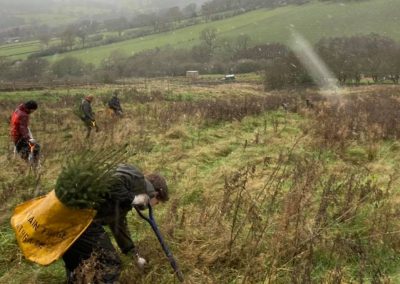What we do
The Devonshire Group comprises businesses including heritage attractions, shops, restaurants and luxury accommodation at Chatsworth, Bolton Abbey and in Lismore Castle in Ireland. The estates include tenanted businesses and residential property, a property development business with a pipeline of 2000 homes, sustainable forestry and farming businesses and an estate farm shop at Chatsworth.
Comprising 35,000 acres (14,164 ha), the Chatsworth Estate in Derbyshire includes in-hand farms and forestry enterprises, renewable energy initiatives, hospitality businesses and visitor activities, the latter being centred around the Grade I listed house and garden.
In addition, estate land is leased for a variety of uses including farming, commercial, residential and recreation.
The heritage attraction
The heritage attraction comprises Chatsworth House, Garden, Farmyard and surrounding parkland, which are managed by the Chatsworth House Trust, a registered charity dedicated to the long-term preservation of the estate for the benefit of visitors. There are also a range of associated businesses including hospitality, retail and catering at Chatsworth House.
The parkland surrounding Chatsworth House covers approximately 1,000 acres (405 ha) and is open to visitors free of charge all year round, except for the south-east section, known as the Old Park, which is a conservation area and Site of Special Scientific Interest (SSSI). Farm stock also graze in the park, which belong to either the estate farm, tenant farmers or smallholders.
Chatsworth is a member of the Association of Leading Visitor Attractions and the Treasure Houses of England, an association of ten of the most magnificent palaces, houses and castles in England today. Chatsworth holds a Green Tourism Gold Award and a Peak District Environmental Quality Mark, and in 2021, the Chatsworth Farmyard was accredited by the Rare Breed Survival Trust as part of their rare breed programme.
The wider estate
The estate includes dozens of tenanted farms and over 450 residential properties. There are five ‘sub-estates’, separate from the central estate, spread across Derbyshire.
The central estate is a compact block of 12,310 acres (4,982 ha) around Chatsworth House, including the park and many properties in the villages of Baslow, Pilsley, Edensor, Beeley, and Calton Lees. The Estate Office is at Edensor. It was originally built by the 5th Duke as an elegant red-brick inn, to cater for an increasing number of well-to-do travellers coming to see Chatsworth.
The West Estate is 6,498 acres (2630 ha) of scattered high ground, mostly in the Peak District National Park and partly in Staffordshire, approximately 10 miles (16km) south-west of Chatsworth.
The Shottle Estate is 3,519 acres (1424 ha) in and around the village of Shottle, which is around 15 miles (24 km) south of Chatsworth. This low-lying land is home to most of the dairy farms on the estate, and also has some arable farms.
The Staveley Estate is 3,400 acres (1376 ha) and is approximately 11 miles (18km) east of Chatsworth. It and includes a 355 acre (144 ha) former industrial site called Staveley Works, woodlands and arable farms.
The Scarcliffe Estate, made up of mostly arable farms, is 9,320 acres (3772 ha) and lies approximately 14 miles (23km) east of Chatsworth.
The Chatsworth Settlement Trust has a number of different revenue streams, in addition to agricultural rents. Several thousand acres, mostly around Chatsworth and on the Staveley Estate, are farmed in-hand. A number of properties are let as holiday cottages, including Bess of Hardwick’s Hunting Tower in the park, and several quarries produce limestone and other minerals. The old kitchen garden at Barbrook at the northern edge of the park is let to the Caravan Club, who operate the Chatsworth Park Caravan Club site, and a paddock at the southern end of the park at Calton Lees, is let to the Blue Diamond Garden and Living Centres group, where they operate the Blue Diamond Chatsworth Garden Centre.

The Bolton Abbey Estate in North Yorkshire comprises 28,000 acres (11,331 ha), including let farms, moorland and woodland. There are also a significant number of houses and commercial properties, many of which are listed, including the ancient ruins of the 12th century Bolton Priory upon which the estate is focussed. In addition to the let estate, the estate has in hand catering, tourism and retail interests.
Apart from some interests in Keighley, the estate is situated around the village of Bolton Abbey, within a ringed boundary. The River Wharfe runs through the middle of the estate, the majority of which lies within the Yorkshire Dales National Park. In common with the rest of the Dales, Wharfedale is a popular area and the estate welcomes 450,000 visitors annually.
Historically Bolton Abbey was considered the Devonshire family’s sporting estate, encompassing as it did Barden Moor and Barden Fell. The grouse moors are still run in hand and to which open access was granted in 1968, some 32 years before the CROW Act in 2000. Including the moors, the estate offers 90 miles of public and permissive footpaths and is an exceedingly popular place of public resort. The Devonshire Arms Hotel, the Devonshire Fell Hotel and the Cavendish Pavilion, all of which are owned and sit within the Bolton Abbey estate, are operated by Devonshire Hotels & Restaurants.
The Hall, situated within the Priory precinct while principally a private dwelling is used for other functions and its Tower incorporates the original arched entrance to the monastic house of Bolton Priory. Its initial development was begun by the Clifford family and in the 1840s it was further enlarged by Sir Joseph Paxton (patronised by the sixth Duke of Devonshire) who later designed the Crystal Palace for the Great Exhibition in London.

The Lismore Estate, based around Lismore Castle, comprises 7,732 acres including farm land, commercial and amenity woodland and significant areas of upland known as the Knockmealdown Mountains. It also includes residential and commercial property. The River Blackwater runs through the estate where significant riparian interests are retained, the majority of which are leased to local angling clubs. However, Careysville, situated in County Cork 12 miles upstream from Lismore, is managed by the estate and offers hotel style accommodation and exclusive salmon fishing. The estate is based around Lismore Castle, available for private rental, Lismore Castle Gardens, seven acres open to visitors, and Lismore Castle Arts, a contemporary art gallery.
The estate is focussed on Lismore Castle and Gardens. The Castle situated in the town of Lismore, dates back to 1185 when Prince John of England built a “castellum” on the present site and a round tower from this period still stands today. The Castle subsequently acquired by Sir Walter Raleigh came into the Devonshire family in 1753 by marriage and was subject to extensive restoration between 1845 and 1855 by the 6th Duke to whom its current layout and design is owed. It was during this restoration that the Lismore Crozier and the Book of Lismore, an illuminated manuscript were found, the latter being entrusted in the care of University College Cork in 2020. The Crozier is held in the National Museum of Ireland in Dublin.
The Castle is available to rent by private parties and is also used by the Devonshire family. Adele Astaire, Fred Astaire’s sister, married into the Devonshire family and lived in the Castle in the 1930s and 1940s and Fred was a frequent visitor.
The Castle gardens are open to the public and comprise seven acres set on two levels. In the upper garden is a vinery of significant historical importance which was designed by Sir Joseph Paxton, prior to his building the Crystal Palace in London. The vinery was restored in 2020.
Accessed through the gardens is a gallery which forms part of the Castle. The gallery is run by Lismore Castle Arts, a body committed to the presentation and promotion of contemporary visual art of international significance. The gallery together with St Carthage’s Hall in Lismore, host annual exhibitions as well as a programme of tours, workshops and other arts related events.
The Devonshire Group is committed to making a positive difference to people’s lives by inspiring a love and understanding of art, heritage and the environment. This is led by the Learning and Engagement team of the Chatsworth House Trust, who create learning opportunities across the Devonshire Group, enriched by the essential qualities of our estates, to inspire current and future generations and affect how they live in and think about the world around them.
The Learning and Engagement department leads on positioning us as STEAM learning destinations and in the strategic ambitions as set out in the Learning and Engagement strategy:
- To provide in-depth learning experiences that make a positive difference to individuals, the sector and society
- To be a leader in creating high quality and accessible arts, heritage and outdoor learning experiences
- To expand our educational reach by collaborating effectively with the diverse expertise available within the Devonshire Group
Comprising one castle, two hotels, three inns, over 25 holiday homes and cottages as well as glamping and camping in season, hospitality within the Devonshire Group is focussed on providing a warm welcome and excellent stay for each of our guests.
Devonshire hotels & restaurants
The Devonshire Hotels and Restaurants are a collection of hotels, inns, boltholes, restaurants and a spa offering breathtaking locations in the countryside to rest, eat and celebrate in comfort and style. Situated in tranquil and unspoiled settings in Yorkshire and Derbyshire, our locations are run by around 250 colleagues who are committed to providing outstanding hospitality for every guest.
Lismore Castle
Lismore Castle, in Waterford, Ireland dating from 1170, is a one of a kind castle available for hire with a repository of extraordinary history, from walls marked by Cromwellian cannon balls to visits by Cecil Beaton, Lucian Freud, Fred Astaire and JFK, all of whom slept a night or more in this private castle on the banks of the River Blackwater. Welcoming small and large parties, all guests are attended by a private staff led by Denis Nevin, the castle’s Butler for the last 35 years.
Careysville House
Careysville House, overlooking the River Blackwater in County Cork, Ireland, offers private accommodation and premier salmon fly fishing. Built in 1812 on the site of the old ruined Ballymacpatrick Castle, a warm Irish welcome awaits guests as well as spacious accommodation, an award-winning chef, knowledgeable and enthusiastic ghillies alongside some of the finest salmon fly fishing in Ireland.
Devonshire Collections
The collections at Chatsworth have grown with each generation of the family that has lived here and include works by some of the most famous and well-loved artists and sculptors of the last four hundred years including an internationally significant collection of Old Master Drawings. The collection continues to grow, with pieces from contemporary artists set alongside works acquired by previous generations.
The extensive and rich archives and library at Chatsworth span more than 450 years, from the Elizabethan era to the present day. They document the history of Chatsworth and many of the other properties owned by the Cavendish family past and present, including Hardwick Hall, Bolton Abbey, Devonshire House, Burlington House, Chiswick House, Compton Place, Londesborough and Lismore Castle, as well as their associated estates.
An active loans, research and creative programme aims to maximise engagement with the Devonshire Collections, and we partner with the creative and academic communities to continually improve opportunities for access.
Lismore Castle Arts
Lismore Castle Arts, a not-for-profit initiative, was founded in 2005 and is committed to the presentation and promotion of contemporary visual art in Ireland. It hosts exhibitions of international significance alongside a series of smaller exhibitions, projects and events as well as a comprehensive learning programme.
Since opening, the gallery has played host to the works of many leading international artists including Matthew Barney, Gerard Byrne, Dorothy Cross, Josephsohn, Richard Long, Eva Rothschild, Danh Vo, Ai Weiwei and TJ Wilcox.
The Devonshire Group retail portfolio includes a range of businesses including the Chatsworth Estate Farm Shop, gifts shop at our heritage attractions as well as Peak Village, an outdoor shopping village in Rowsley, Derbyshire.
Chatsworth Estate Farm Shop
Established in 1977, our award-winning Chatsworth Estate Farm shop, situated just 1.5 miles from Chatsworth House, offers a huge selection of produce. More than half of all products are either produced or prepared on the Chatsworth Estate and we prefer to source from small local suppliers whenever possible.
Gift shops
Our gift shops, located at Bolton Abbey, Chatsworth and Lismore offer a large selection of products inspired by our attractions. We pride ourselves on supporting local skilled makers, with many of our own-label ranges exclusively produced in collaboration with estate tenants and local businesses.
Ecommerce
Our online gift shop is, available for UK delivery, combines the best of our Chatsworth Estate Farm Shop and gift shop ranges. The shop stocks Chatsworth own-label lines as well as leading local makers. We are planning to expand into international delivery in the coming years.
Peak Village
Peak Village is a vibrant shopping and leisure destination and a recent acquisition of the Devonshire Property Group. National named retailers, such as Regatta Outdoors, Pavers Shoes and Denby Pottery, sit alongside independent retailers of fashion, homeware and gifts as well as seasonal events and activities.
The Devonshire Group’s property interests span far and wide in terms of geography, usage, scale and opportunity. From traditional farmsteads and historic listed buildings, to substantial commercial and industrial units this breadth and depth, allied to a considerable planning pipeline, equates to an extremely diverse and financially significant portfolio.
Covering over 7,700 acres (3,000 ha) in Derbyshire, in-hand farming within The Devonshire Group combines both arable and livestock, adopting regenerative farming practices while using technology to maximise economies of scale.
The livestock enterprise encompasses 3,600 breeding ewes and 300 suckler cows, grass-fed on land surrounding Chatsworth House, including parkland, moorland and improved grassland. Breeding stock of all classes is sold across the country, and beef and lamb is sold to the Chatsworth Estate Farm Shop and café and other local supply chains
The arable farm is situated in north east Derbyshire growing mainly winter wheat, winter oilseed rape, winter barley, spring barley, spring oats and spring beans. The arable and livestock teams work closely to identify and maximise opportunities to share knowledge and resources.

Managing over 5,500 acres (2,226 ha) at Bolton Abbey and Chatsworth, the Forestry and Arboricultural teams are responsible for the stewardship and management of the woodlands and individual trees across the entirety of the estates.
The woodlands are managed for multiple purposes including timber production, conservation and recreation under the UK Woodland Assurance Standard and are FSC® certified. The woodlands sequester over 8,000 tonnes of CO₂ equivalent a year with an extensive replanting programme of approximately 90,000 trees annually.
Timber from the estate is used for a variety of end products including firewood which is sold by the estate to local residents and businesses. The Arboricultural team offers tree surgery services to external customers as well as undertaking extensive in-house safety operations and traffic management alongside assisting with forestry felling operations.



